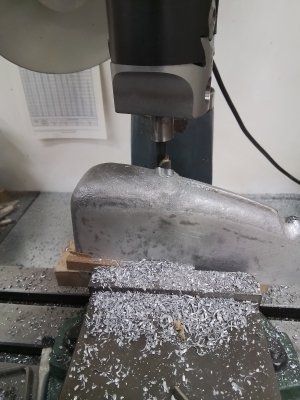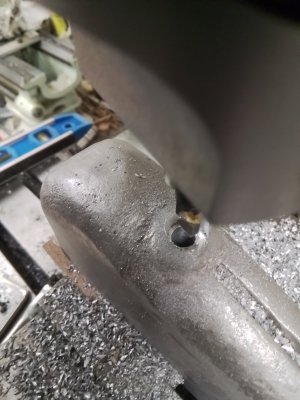A drill will start and drill where it likes. The boring head will correct small errors caused by the drill wandering away from the spindle centre. This will be several thou to a dozen thou from a drilled hole.
The way I like to drill holes: Locate the hole. Use a spotting drill to start the hole's Vee. I mark it to 1/2 to 1/3 the diameter of the next drill to follow. The spotting drill will match the angle of the following drill. For instance, you can buy spotting drills at 120, 135, and 90 degrees.
If I have to make the hole larger, I almost never follow one drill with another. I respot the hole making the correct angle chamfer, then follow with the larger drill.
Using a spotting drill this way stops drills from wandering *too far* from the centre line of the spindle. That said, you can only expect to bewithing about .003 of the centreline. The boring head will correct any deviation from there.
FYI a reamer will follow the drilled hole, and doesn't do any substancial correction of hole location.



